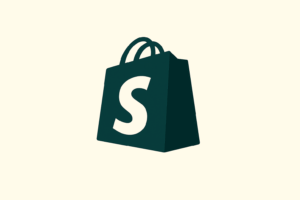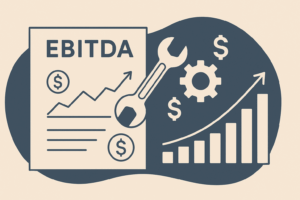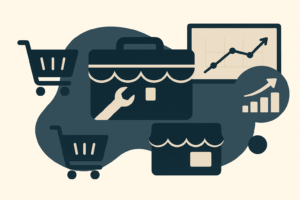The CapEx Reality—and the Gold Sitting in Your Aftermarket
Every industrial brand that sells hardware dreams of smoother revenue. But reality usually looks like this: one big CapEx PO… then silence. Maybe you will sell some spare parts later. Maybe a tech calls in for a replacement gasket. But more often, the revenue graph flatlines, unlike online retail sales, which have trained consumers to expect timed reorders, smart bundling, and subscription-like convenience. The service department is reactive. The parts team is scrambling. And your EBITDA still leans too hard on new equipment sales.
It’s not a product problem—it’s an ecommerce business model problem that saas providers solved long ago by structuring predictable value into every lifecycle stage.
Industrial OEMs haven’t figured out how to monetize ongoing value like a SaaS company. And it’s not because customers don’t need more. They do. Bearings wear down. Filters clog. Blades dull. Service intervals tick forward silently. But unless the machine breaks, or a good tech remembers to order, you don’t get paid.
That’s the opportunity:
Turn parts + service into a predictive, recurring revenue stream that feels like a subscription, performs like SaaS, and runs automatically through your ecommerce platform.
In this guide, we’ll walk you through the exact blueprint:
- How to bundle sensors with SKUs at checkout
- How to trigger email and SMS reorders based on runtime, not guesswork
- How to build a post-checkout subscription logic that actually impacts EBITDA
Because your customers don’t just want uptime. They’ll pay you for it—if you build the system that lets them.
Why Your Ecommerce Business Can’t Rely on Reactive Revenue
There’s a myth most equipment manufacturers carry without realizing: that once you sell the machine, you’ve got a built-in pipeline for service parts. The hard part is winning the initial PO, then it’s just rinse and repeat.
But what happens?
You get a front-loaded deal that looks great on paper. Then… silence. Maybe the customer reorders filters once a year. Maybe a maintenance tech logs into your online store when something breaks, but by then, it’s too late to prevent downtime. Maybe your service team gets pulled in after a fire drill. But it’s chaotic. It’s reactive. And it’s definitely not recurring.
Even when the customer needs you, the friction is everywhere—unlike online shopping, where reorders are one-click and cart memory is built in:
- They forget your store URL
- The part number isn’t handy
- The person who placed the original order left
- Their ERP has no reminder system tied to service
- Your team is fielding RFQs over email—while your customers expect to simply click, reorder, and pay online.
This is why even brands with hundreds of installed units can’t forecast parts revenue. It’s why EBITDA doesn’t move in the right direction. You’re sitting on latent demand, but your ecommerce and post-sale systems don’t capture it.
And it’s not just an ops issue. It’s a strategic leakage problem. Every month, a consumable that doesn’t get reordered is:
- Lost revenue
- Lower retention
- Higher service costs when something fails preventably
The fix isn’t just better email marketing or pricing tweaks. It’s rethinking the experience around predictive maintenance as a revenue engine, not just a service obligation.
What if your store knew when to remind customers to reorder, based on hours of operation, not calendar time?
What if the machine triggered the order itself?
What if service bundles, replacement parts, and warranty plans were offered the way SaaS companies upsell features—timed, data-driven, and frictionless?
That’s what we’re going to build next.
Act Like a SaaS: How Industrial Brands Can Predict & Monetize Maintenance
SaaS companies figured this out years ago: predictable revenue isn’t an accident—it’s a system. Renewal reminders. Usage-based upsells. Freemium feature triggers. All of it is engineered to make the purchase decision feel like a natural next step, not a new conversation.
So why are industrial ecommerce brands still treating spare parts like they’re lucky to be remembered?
If your equipment has a wear cycle, belts, gaskets, filters, sensors, and motors, you’ve got the foundation of a recurring revenue product. But instead of bundling it like a subscription, you’re leaving it to chance. Meanwhile, procurement teams cut POs when they’re desperate, and your brand becomes a just-in-time vendor, not a long-term solution.
Here’s what SaaS thinking looks like in your parts business:
1. From Static SKUs to Sensor-Triggered Reorders
Let’s say your product includes a temperature or vibration sensor that connects directly to your ecommerce website via middleware. It’s already tracking operational health. Now imagine tying that data back to Shopify and enriching it with customer data—so every part reorder is timely, personalized, and accurate.
This isn’t science fiction. You can do this today using IoT integrations, webhooks, and customer profiles in Shopify Plus. We’ve built systems where sensor alerts feed into reorder recommendations, pushed straight into Klaviyo or Attentive for customer outreach.
Suddenly, you’re not just selling parts. You’re delivering uptime.
2. Selling Preventive Bundles at Checkout
Instead of waiting for someone to go find the part they’ll need later, offer it upfront. You know the MTBF (mean time between failures). You know the maintenance schedule. So bundle it.
“Add your first 6 months of filters, gaskets, and sensor wipes for 20% off—ships on schedule.”
This isn’t a warranty upsell. It’s an operational continuity plan. Framed correctly, it’s not a cost, it’s peace of mind. You move inventory earlier, create stickiness, and reduce reactive service calls.
3. Email and SMS Cadence That Feels Like Support
Nobody wants marketing emails that feel like sales. But reminders that say, “Your hydraulic actuator is due for service—here’s the kit,” with a pre-built cart? That’s not spam. That’s value.
Using Klaviyo and Attentive, we time these messages based on:
- Runtime data (if sensors are connected)
- Equipment install date (captured at checkout)
- Past purchase cadence (based on order frequency)
- Product type and use case (fleet vs. single unit)
The result? You replace lumpy, ad-hoc orders with renewal-style revenue.
4. Forecastable EBITDA from Unsexy Consumables
Here’s the kicker: this stuff isn’t flashy. Gaskets. Lube. Seals. Sensors. It’s not the hero product. But it’s margin-rich and loyalty-enhancing when sold with the logic of saas software—recurring, invisible, indispensable.
The play isn’t to grow spare parts into a new business unit—it’s to stabilize your ecommerce sales by capturing predictable aftermarket demand. It’s to stabilize what’s already leaking from your bottom line, and convert it into a forecastable asset.
Your CFO doesn’t care if it’s sexy. They care that it’s recurring.
Using Shopify Functions to Power Predictive Maintenance
Once you commit to treating spare parts like a recurring product, not a forgotten add-on, you need the infrastructure to support it. That means configuring Shopify Plus not just to sell what people ask for, but to recommend, remind, and reorder what they’ll need next.
Let’s break it down:
1. Post-Checkout Triggers for Predictive Bundles
The order is placed. Now what?
This is where most ecommerce setups go silent. But for predictive maintenance, the post-checkout moment is prime time to initiate lifecycle flows.
Using Shopify Flow, you can:
- Identify products tied to maintenance cycles.
- Tag customers for specific follow-ups.
- Trigger bundle suggestion emails (e.g. “Here’s what you’ll need 90 days from now.”)
- Populate subscription offers for maintenance kits, tools, or sensor upgrades.
These flows should not feel like upsells. They should feel like a care plan.
You bought a $15,000 hydraulic press. Of course, you want to keep it running.
2. Cart Logic That Offers Operational Continuity
Inside the PDP or cart, smart logic can suggest bundled kits not just by product type, but by use-case and volume.
Examples:
- If the customer adds a cooling system, surface a prompt: “Add 3-month coolant kit – ships with install.”
- If the cart includes 4+ units, offer fleet maintenance bundles or training materials.
- Tie in a warranty extension if all maintenance kits are purchased at checkout.
This isn’t about discounts. It’s about relevance. The buyer isn’t looking for a deal—they’re trying to prevent downtime.
3. Integrating Subscription Logic Without Losing Control
Shopify’s native subscription tools (via APIs or apps like Recharge) let you turn consumables into recurring orders. But you don’t need to push hard on subscriptions.
We often deploy hybrid flows:
- Initial product + starter kit at checkout
- 60-day email: “Set your next delivery schedule”
- Klaviyo-triggered reorder prompts with pre-filled carts
This gives the buyer flexibility, but keeps your replenishment pipeline steady—just like saas applications that automate re-engagement and renewals. You own the rhythm of the relationship—even if they don’t “subscribe.”
4. Alert-Driven Flows: When Sensors Talk to CRM
For brands with connected products, integrating sensors into Shopify and Klaviyo isn’t as complicated as it sounds. That lets you create logic like:
- “If sensor X flags Y RPM increase, send reorder link.”
- “If vibration sensor exceeds threshold, prompt support call + offer spare bearing kit.”
You’re not just reacting to behavior—you’re proactively engineering revenue based on real-world usage.
Sensor Integration Deep Dive: Bridging IoT to Shopify Without the Black Box
The phrase “sensor-triggered ecommerce” sounds futuristic, but the plumbing behind it is surprisingly grounded. Most industrial equipment already includes sensors, temperature, vibration, pressure, runtime hours, or wear indicators. The real challenge isn’t the sensor data—it’s connecting that signal to your ecommerce system using cloud computing infrastructure and secure middleware.
For most brands, the bridge between IoT and ecommerce is middleware. Tools like Alloy Automation, Zapier, or custom-built APIs can ingest sensor data (often exposed through MQTT brokers or REST endpoints), process it through condition-based logic, and pass a structured event into Shopify or Klaviyo. For example:
“If runtime > 250 hours, push event to Klaviyo: ‘Reorder hydraulic seal kit’ with product URL + cart pre-fill.”
Once the integration is live, this logic feels invisible to the user, but it becomes a compounding revenue flywheel. Every sensor ping becomes a potential revenue touchpoint.
Common Sensor Types Integrated into Shopify Workflows:
- Vibration sensors (for bearing/motor health)
- Pressure or flow sensors (for hydraulic systems)
- Runtime meters (for wear cycle prediction)
- Temperature sensors (for thermal degradation triggers)
- Humidity monitors (for consumable integrity)
Security Notes:
Don’t let your IT team block progress out of fear. These integrations don’t require piping raw sensor data into Shopify directly. Instead, route data through a secure, external middleware platform that anonymizes and standardizes events. Always encrypt API calls and throttle flows to avoid spamming customers.
Avoid This Mistake:
We’ve seen brands trigger emails every time a sensor exceeds a threshold, which overwhelms both users and servers. Instead, build event dampeners: only fire the flow once every X hours/days, or only if certain combinations of signals occur.
The EBITDA Model: Turning Predictive Maintenance Into Margin You Can Forecast
For most industrial brands, aftermarket parts live in the shadows, sporadic, hard to predict, and difficult to scale. But when you connect predictive maintenance to ecommerce logic, that lumpy revenue becomes a margin flywheel.
Turning Spare Parts into Recurring Online Purchases
Spare parts may not feel like SaaS, but their behavior is eerily similar:
- They have lifecycle cycles.
- They fail at predictable intervals.
- They’re essential for continued product usage.
- And they can be tied to automated reminders, bundles, and repurchase flows.
When you pair those characteristics with Shopify’s ecommerce infrastructure and Klaviyo’s behavioral flows, what you get is not just more sales, it’s predictable, repeatable EBITDA expansion.
Example:
If your average spare part sells for $120, and you can generate 2.4 purchases/year per machine via predictive triggers, that’s $288/machine in annual tail revenue. Multiply by a 10,000-unit install base and suddenly, you’re talking about $2.8M in high-margin recurring sales without any new customer acquisition cost.
Now wrap that in a Klaviyo cadence, structured bundle logic, and post-purchase automation? That’s SaaS-like efficiency. No engineers required.
Capital Efficiency + Building a Scalable Business Online
Predictive maintenance isn’t just a customer service upgrade. It’s a capital strategy. Because when you take something lumpy, reactive, and seasonal, like spare parts revenue, and turn it into a systemized, recurring stream, you’re not just smoothing cash flow. You’re rewriting how your business is valued.
Private equity doesn’t pay premiums for hope. They pay for rhythm. Recurring revenue models, especially those tied to replenishment, condition monitoring, or subscriptionized support, command significantly higher EBITDA multiples. Not because they’re sexier, but because they’re reliable. Forecastable. Less exposed to timing risk. And when spare parts become renewables, not wildcards, you shift your profile from “project-based supplier” to “platform brand with a monetized lifecycle.”
This isn’t theory. We’ve seen industrial brands go from 7x to 11x multiples in less than 24 months by integrating predictive maintenance programs and layering recurring SKUs into their post-checkout flows.
But the upside doesn’t end at valuation. Recurring aftermarket revenue creates clarity across the organization:
- Marketing stops guessing which buyers are ready. They see usage curves and reorder triggers.
- Ops gains forward visibility on inventory needs, warehouse loads, and supplier lead times.
- Finance doesn’t just report on what happened—they model what’s coming. Clean, predictive, category-specific cash flow.
And leadership? They stop managing spikes and start steering cycles. Because when maintenance becomes a model—and not a mayday—you’re no longer chasing EBITDA. You’re designing it.
Predictive Maintenance Ecommerce Toolkit
This toolkit helps you operate like a saas-defined software brand—even if you sell hydraulic seals, not logins.
Designed to accompany your article Predictive Maintenance Ecommerce: Monetizing Spare Parts & Service Like a SaaS, this toolkit provides manufacturers and industrial ecommerce teams with the systems, logic, and assets to operationalize predictive maintenance revenue.
1. Spare Parts Revenue Audit Scorecard
Diagnose where your ecommerce and service operations are leaking revenue:
| Area | Current State | Needs Work? | Notes |
| % of installed base with active post-sale orders | Low / Med / High | ☐ | |
| Email or SMS reorders tied to the install date | Yes / No | ☐ | |
| Sensor data linked to store profiles | Yes / No | ☐ | |
| Bundles shown at checkout (based on use case) | Yes / No | ☐ | |
| Subscription or replenishment logic is active | Yes / No | ☐ | |
| Customer service calls reduced via timed reminders | Yes / No | ☐ | |
| Post-checkout flows driving reorders | Yes / No | ☐ |
2. Predictive Maintenance Trigger Map
A cheat sheet for setting smart reorder rules. Use these examples to map your product catalog to Shopify or Klaviyo logic.
| Part Type | Trigger Type | Timing Mechanism | Reorder Logic |
| Hydraulic filter | Runtime (sensor) | 250 hours | Email & SMS cart reminder |
| Gasket set | Install date | 6 months post-install | Scheduled reorder prompt |
| Lubricant kit | Usage frequency | Every 30 jobs | Dynamic bundle + replenishment |
| Sensor wipe kit | Time + humidity level | 90 days or RH > 80% | Alert + recommended add-on |
| Replacement blade | Wear level | When vibration crosses the threshold | Triggered reorder + warranty reminder |
3. Shopify Plus + Klaviyo Architecture Blueprint
An illustrated flow showing how predictive maintenance ecommerce works:
Shopify Plus checkout
⭣
Product & customer tagged for service flow
⭣
Shopify Flow → Klaviyo
⭣
Klaviyo sends reorder prompts
⭣
Optional: Recharge schedules future delivery
⭣
Spare part is reordered → revenue captured without a sales touch
Tools required:
- Shopify Flow (logic + triggers)
- Klaviyo (reminders + segmentation)
- Optional: Attentive (SMS cadence), Alloy or Zapier (IoT to CRM bridge)
4. Reorder Revenue Forecasting Model
Use this formula to model aftermarket recurring revenue:
Annual Per-Unit Tail Revenue =
Average Spare Part Price × Expected Reorders/Year
Example:
$120 avg part × 2.4 reorders = $288/unit/year
Installed base: 10,000 units
Total = $2.88M in tail revenue
Plug in your own values below:
| Metric | Value |
| Avg part price | $ |
| Avg reorders/year | |
| Total install base | |
| Forecasted tail revenue | $ |
Use this to pitch internal investment in your predictive maintenance stack.
5. Post‑Checkout Flow Planner
Plan your post-purchase experience like a SaaS product:
| Step | Trigger | Action | Platform |
| Immediately after checkout | The product includes a maintenance item | Tag the customer for the lifecycle flow | Shopify Flow |
| 30 days post-install | Fixed interval | Email: “Time to replace your first filter?” | Klaviyo |
| 120 days + sensor alert | Data from IoT | SMS: “This part may fail soon—order now” | Klaviyo + Attentive |
| 180 days | Historical purchase pattern | Email bundle suggestion + subscribe CTA | Klaviyo |
| 1 year | No reorder detected | Winback message + cart pre-fill | Shopify + Klaviyo |
Ready to Build a Post‑Checkout Subscription Strategy?
If you’re running Shopify Plus and want to integrate spare-part bundles, reorder logic, and predictive maintenance flows—let’s talk.
We build custom post-checkout upsell systems, Klaviyo & Attentive renewal sequences, and subscription-ready product bundles built for long-term EBITDA expansion.
Contact us and let’s turn your spare parts business into a margin machine.









